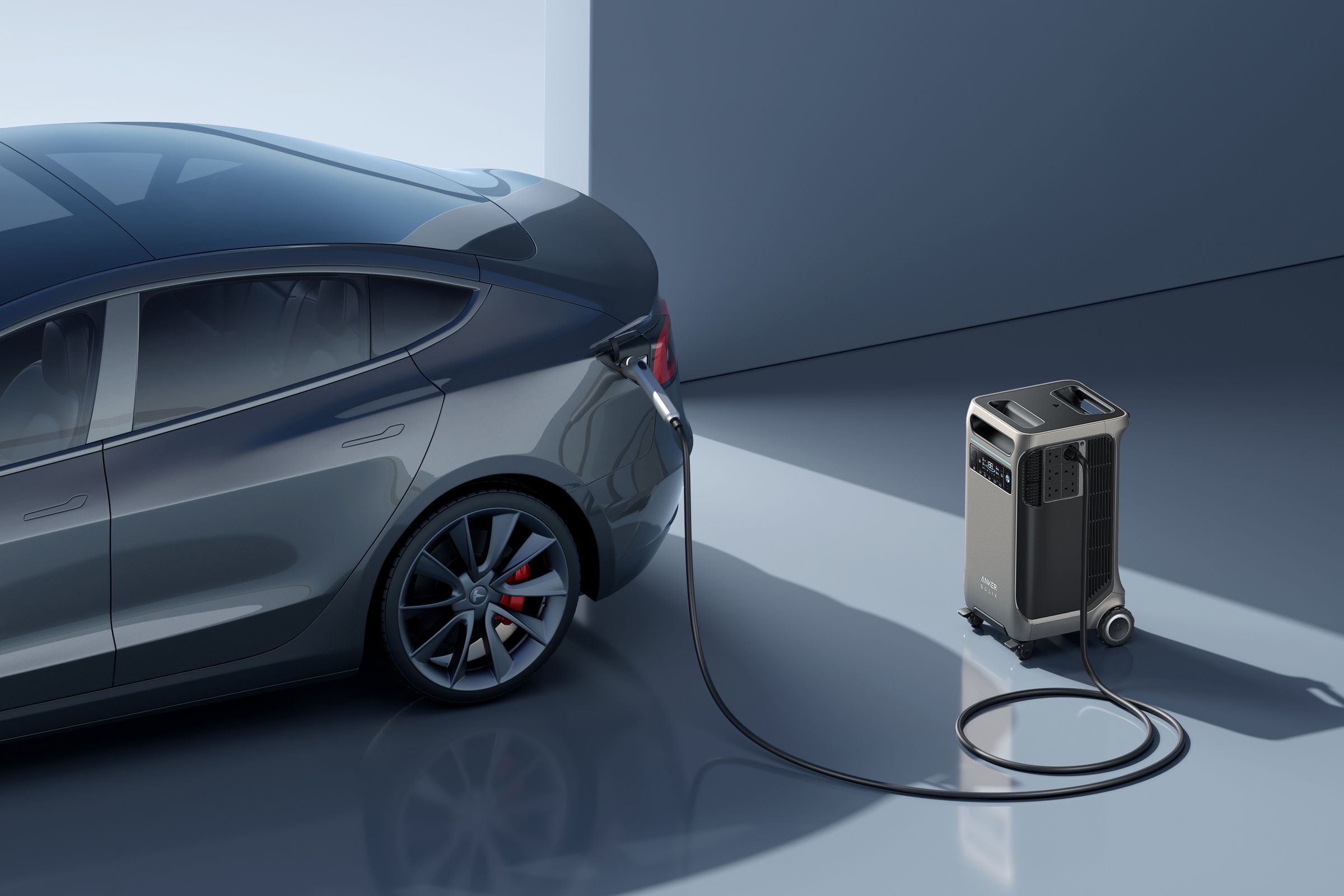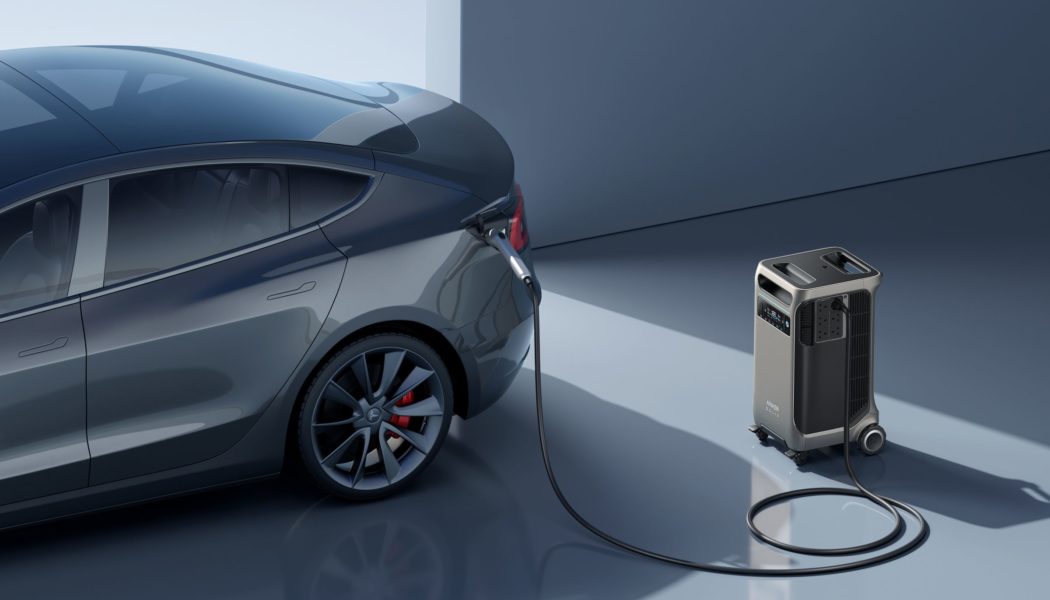Anker’s Solix F3800 is portable enough to take on a weekend roadtrip and scalable enough to power an entire home for days during a blackout.
Share this story

Anker’s flagship power station, the Solix F3800, is now shipping after raising almost $6 million on Kickstarter. It can be used independently to power a weekend away or scaled for whole-home backup. Prices start at $3,999 with general sales set to begin on January 9th.
The 3.84kWh Solix F3800 power station itself can be expanded to 26.9kWh of energy capacity after adding six of Anker’s 3.84kWh BP3800 LFP expansion batteries. It’s capable of producing up to 6,000W of dual-voltage (120V / 240V) AC output across oodles of jacks — enough to easily power just about any home device, including the air conditioner and water pump. You can even connect two F3800 together for 12,000W of total AC output and up to 53.8kWh of capacity, but now you’re talking about a system costing tens of thousands of dollars.


According to the US Energy Information Administration, the average US home consumed 889kWh per month in 2022, or about 29.2kWh per day. So, a maxed-out Anker system (53.8kWh) holds enough stored energy to power an entire home for about two days, or much longer if you’re only powering critical devices like the fridge, freezer, sump pump, and a few lights.
The F3800 is designed to be portable with a telescoping handle and wheels. You can connect up to 2400W of foldable solar panels to the F3800 to create a semi-mobile 132.3 pound (60kg) solar generator to power your RV, boat, work shed, or tiny house from the unit’s built-in NEMA 14-50 and L14-30 ports. You can even charge your EV at 6,000W / 240V for a dozen or so extra miles of range in an emergency.
Anker offers a few kits built around the F3800 power station to keep the home up and running when the grid goes down, which is happening more frequently due to the rise in extreme weather. Each kit varies in cost, complexity, and the control it can provide over home circuitry.
At the top end is the Solix F3800 Home Power Kit, which is only available in the United States. It combines the Solix F3800 with a number of additional electrical boxes and cabling, including Anker’s Home Power Panel (professional installation required) to provide battery backup and automatic switchover for up to 12 of your home’s circuits. It also allows your F3800 batteries to store energy collected from your existing rooftop solar panels after installing a current transformer. The Anker system can then be optimized in the Anker app (connects over Wi-Fi or Bluetooth) to charge the batteries using surplus solar power when the sun is strong and electricity rates are cheap and to power the home at night off your energy stores when grid prices increase — potentially saving you money over time. The F3800 home energy system can’t send excess electricity back to the grid.
The less capable and cheaper Home Backup Kit includes a 10-circuit 120V / 240V transfer switch, allowing the Solix F3800 and any expansion batteries to plug directly into your home during emergencies, just like noisy and smelly gas generators. However, generators that run on liquid gold still have the advantage of powering your circuits for as long as you keep filling the tank. Unlike the Home Power Kit, the Home Backup Kit requires manual intervention to switch up to 10 home circuits over to your Solix F3800 battery array.


Back in June, Anker announced an even more powerful Solix home backup solution expected to ship sometime in 2024. But that Solix solution is fixed to the wall like a Tesla Powerwall, whereas these Solix F3800 kits offer more flexibility due to their portable and modular design. For example, you can disconnect the F3800 unit and a few expansion batteries from the home and use them to help power your next summer road trip or weekend away.
Anker, like EcoFlow and other recent Tesla Powerwall competitors, is positioning its Solix F3800 kits for home backup that can be “easily installed in a few hours” (by a professional electrician) while doing so “at a significantly reduced cost compared to more traditional home power storage options.” But that’s a calculation each homeowner will have to verify to account for their unique needs, tax incentives, other local variabilities, and the inevitable installation weirdness that usually accompanies any quest for energy independence.









